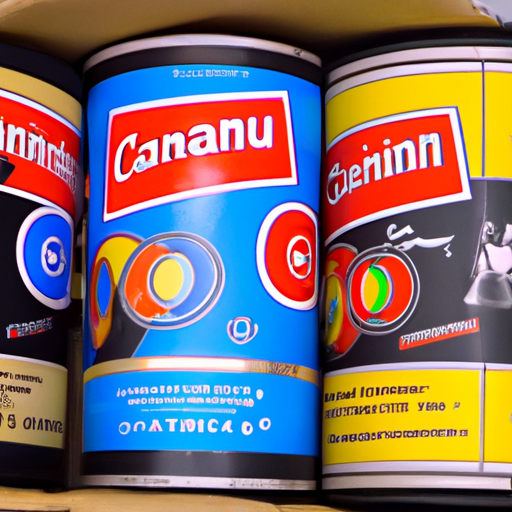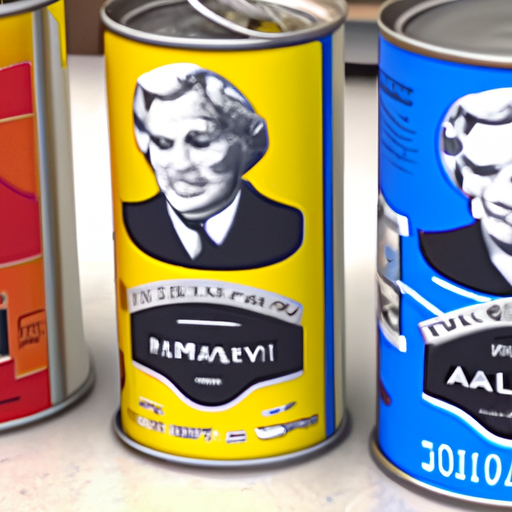
-
Table of Contents
- Cultural Influences in Package Design: Global Inspiration
- The Importance of Cultural Influences in Package Design
- Global Inspiration in Package Design
- 1. Japanese Minimalism
- 2. Indian Vibrancy
- 3. Scandinavian Simplicity
- 4. African Tribal Art
- Case Studies: Successful Implementation of Cultural Influences
- 1. Coca-Cola’s “Share a Coke” Campaign
- 2. KitKat’s Japanese Flavors
- 3. L’Oréal’s Ramadan Packaging
- Conclusion
Cultural Influences in Package Design: Global Inspiration

Package design plays a crucial role in attracting consumers and influencing their purchasing decisions. In today’s globalized world, where products are sold and consumed across borders, it is essential for brands to consider cultural influences in their packaging design. By understanding and incorporating cultural elements, brands can create packaging that resonates with consumers on a deeper level, leading to increased brand loyalty and sales. This article explores the significance of cultural influences in package design and provides valuable insights into global inspiration.
The Importance of Cultural Influences in Package Design
Culture shapes our beliefs, values, and behaviors. It influences our preferences, perceptions, and emotional responses. When it comes to package design, cultural influences can make or break a brand’s success in a particular market. Here are some key reasons why cultural influences are crucial in package design:
- Consumer Identification: Packaging that reflects the cultural values and aesthetics of a target market helps consumers identify with the brand and feel a sense of belonging. This identification creates a strong emotional connection, leading to increased brand loyalty.
- Perception of Quality: Different cultures have different perceptions of what constitutes quality. By incorporating cultural symbols and design elements associated with quality in a specific culture, brands can enhance the perceived value of their products.
- Competitive Advantage: In a crowded marketplace, cultural influences in package design can give brands a competitive edge. By understanding the cultural nuances of a target market, brands can differentiate themselves and stand out from the competition.
- Localization: Adapting packaging design to local cultures helps brands overcome language barriers and effectively communicate their brand message. Localization also demonstrates respect for local customs and traditions, fostering positive brand associations.
Global Inspiration in Package Design
Global inspiration in package design involves drawing inspiration from various cultures around the world to create packaging that appeals to a diverse consumer base. Here are some examples of global inspiration in package design:
1. Japanese Minimalism
Japanese culture is known for its minimalistic and elegant design aesthetic. Many brands have incorporated Japanese design principles into their packaging to convey simplicity, sophistication, and attention to detail. For example, Muji, a Japanese retail company, is renowned for its minimalist packaging that reflects the Zen philosophy of simplicity and functionality.
2. Indian Vibrancy
India is a country rich in vibrant colors, intricate patterns, and diverse cultural traditions. Brands targeting the Indian market often incorporate these elements into their packaging to capture the attention of consumers. For instance, the packaging of Indian snacks and sweets often features bright colors, ornate designs, and traditional motifs that evoke a sense of celebration and joy.
3. Scandinavian Simplicity
Scandinavian design is characterized by its clean lines, minimalism, and functionality. Many global brands have embraced Scandinavian design principles in their packaging to convey a sense of modernity, efficiency, and sustainability. IKEA, a Swedish furniture retailer, is known for its simple and functional packaging that reflects the Scandinavian design ethos.
4. African Tribal Art
African tribal art is renowned for its bold colors, geometric patterns, and symbolic representations. Some brands have drawn inspiration from African tribal art to create packaging that stands out on the shelves and captures the essence of African culture. The use of vibrant colors and intricate patterns in packaging can evoke a sense of energy, authenticity, and cultural richness.
Case Studies: Successful Implementation of Cultural Influences
Several brands have successfully implemented cultural influences in their package design, resulting in increased brand recognition and consumer engagement. Let’s explore some notable case studies:
1. Coca-Cola’s “Share a Coke” Campaign
In 2011, Coca-Cola launched its “Share a Coke” campaign, which involved replacing the Coca-Cola logo on its bottles with popular names in various countries. This campaign aimed to create a personal connection with consumers by incorporating cultural elements such as names that are common and significant in each country. The campaign was a huge success, leading to increased sales and social media engagement.
2. KitKat’s Japanese Flavors
KitKat, a popular chocolate brand, has successfully incorporated cultural influences in its packaging to cater to the Japanese market. In Japan, KitKat offers a wide range of unique flavors inspired by Japanese cuisine and traditions, such as green tea, wasabi, and cherry blossom. The packaging features Japanese characters and design elements, creating a sense of exclusivity and authenticity.
3. L’Oréal’s Ramadan Packaging
L’Oréal, a global beauty brand, introduced special packaging for its products during the holy month of Ramadan, targeting Muslim consumers. The packaging featured Islamic motifs and calligraphy, reflecting the cultural significance of Ramadan. This initiative resonated with Muslim consumers, who appreciated the brand’s recognition and inclusivity.
Conclusion
Cultural influences in package design are essential for brands seeking global success. By understanding and incorporating cultural elements, brands can create packaging that resonates with consumers on a deeper level, leading to increased brand loyalty and sales. Global inspiration in package design allows brands to draw from diverse cultures around the world, creating packaging that captures attention, communicates effectively, and stands out in a crowded marketplace. Successful case studies demonstrate the power of cultural influences in package design, showcasing how brands can leverage cultural elements to create meaningful connections with consumers. In an increasingly interconnected world, brands that embrace cultural influences in their package design are more likely to succeed and thrive.
